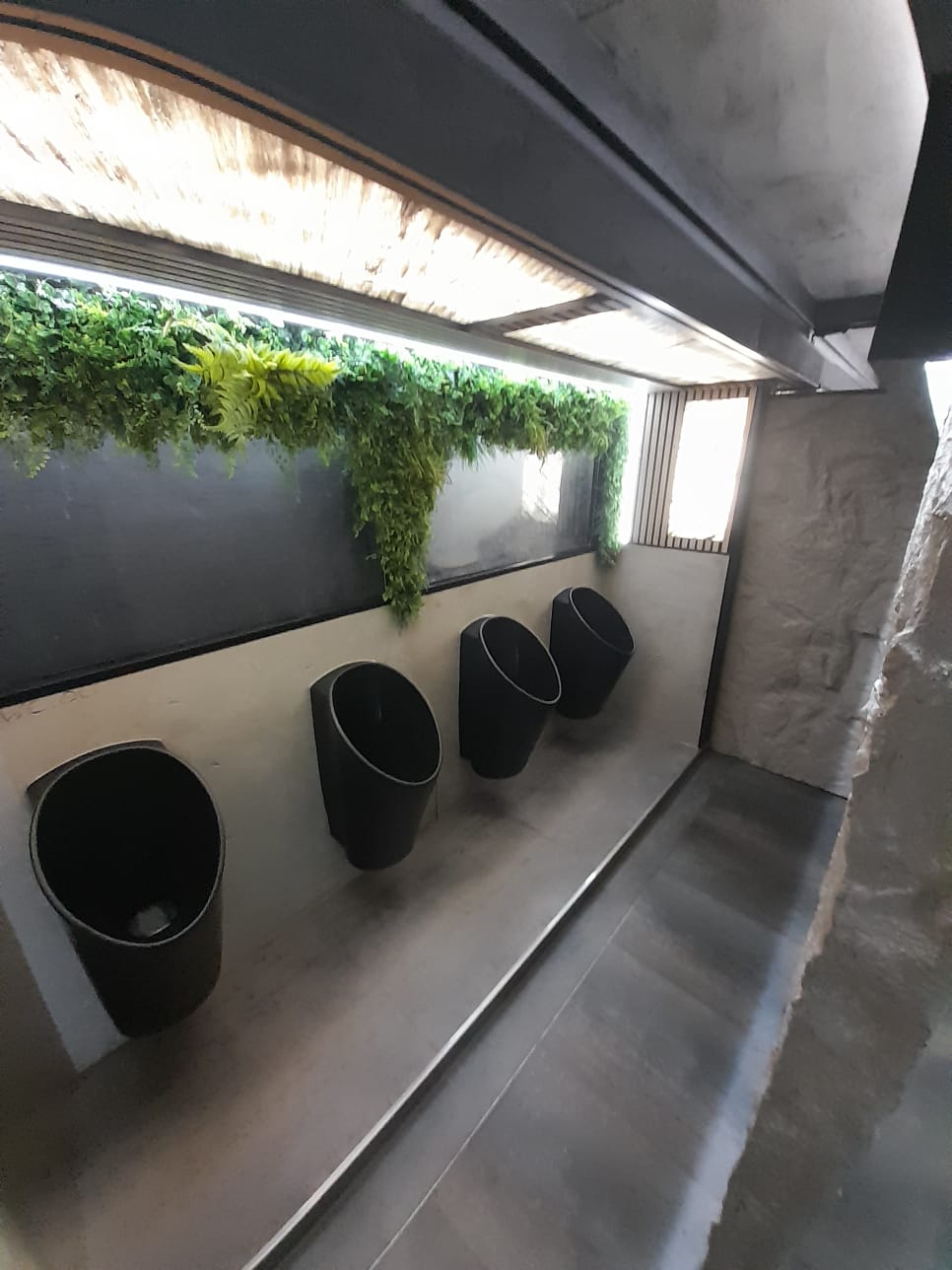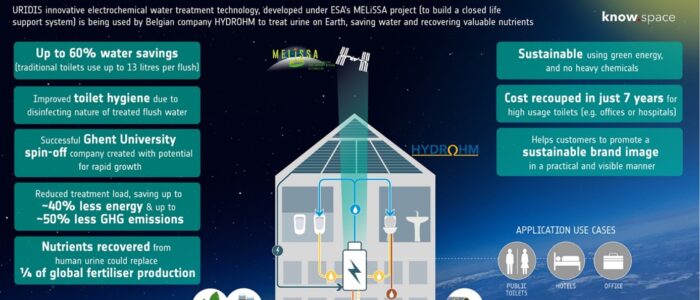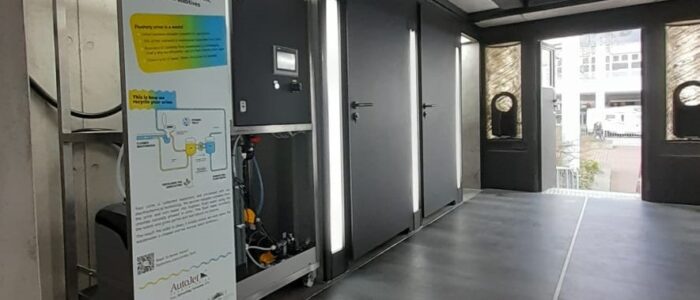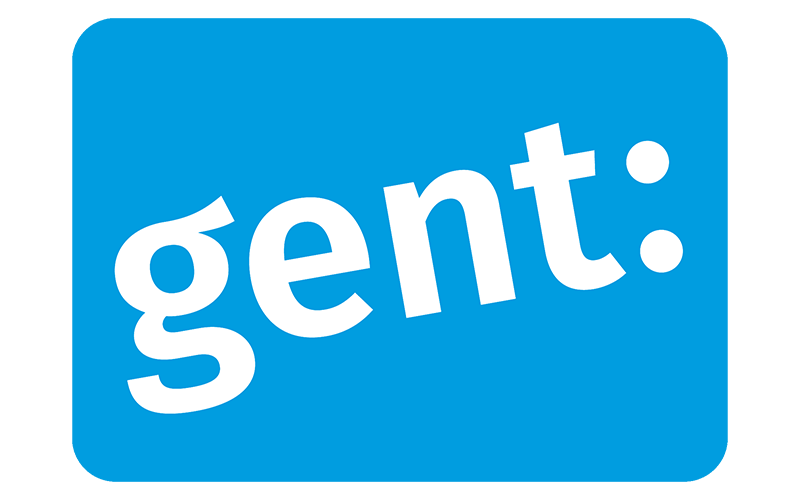
OUR SOLUTIONS
Safe and sustainable toilet water treatment
We have developed our urine treatment system based on space technology developed in collaboration with the European Space Agency and Ghent University. It is a system that recovers the nitrogen and phosphorus as concentrated fertilizers, thereby effectively removing them from the wastewater. The system is entirely driven by electricity.
How it works
Local water treatment: turning every building into a source
Water is increasingly treated at building level to:
- increase water and energy efficiency: for example, local treatment of lightly polluted shower water is more efficient than treatment after blending it with other wastewater, and it allows local reuse for toilet flushing
- increase local resilience: buildings can use rainwater as input, internally reuse water to secure water supply and even become a net water source for the local environment
Urine holds the key
To enable local treatment, water is separately collected in two fractions: the grey water (from shower, sink, kitchen) and the toilet wastewater. Grey water can be treated to reuse quality with solutions that are already on the market. Toilet wastewater is more challenging, because it is a combination of two very different types of wastewater: the fecal matter which is high in organic waste and the urine which is a small volume but high in nitrogen, phosphorus and salts. Separate collection and treatment of the urine greatly facilitates the treatment of the fecal matter and allows to obtain a water quality sufficient for local discharge or infiltration and to recover the valuable nutrients in urine.
In urban settings, the nitrogen and phosphorus load on the mixed wastewater are limiting the capacity of the wastewater treatment plants. Implementation of urine diversion can substantially reduce the energy requirement and greenhouse gas emissions of wastewater treatment plants, as demonstrated by a number of international studies (Wilsenach 2003, Freguia 2021, Badeti 2022, Matar 2022).
Our solutions and collaborations

URINIT – intensified and robust water and nutrient recovery from urine for space exploration
The URINIT project is a collaboration between Cranfield University and HYDROHM and focuses on establishing the feasibility of an intensified and robust process for water and nutrient recovery from urine for space exploration, by combining innovative technologies. The integrated process includes our URIDIS technology, combined with novel technologies aimed at ammonia conversions (nitrification with biocatalysts), phosphorus (biostruvite precipitation), and clean water recovery.


ESA demonstration container
In a project supported by the European Space Agency, HYDROHM has constructed a demonstration container in collaboration with Semilla Maritime Solutions (FR, local coordination) and FGWRS (FR, greywater treatment). The container houses two showers and a sink of which the wastewater will be treated by the FGWRS system for toilet flushing. The URIDIS system by HYDROHM will treat the urine to recover the nutrients and disinfect the toilet flush water.
The container will be deployed at events in Italy from the Spring of 2024 onwards.


EVENTWC-LAUFEN toilet truck
We have installed a demonstration version of our urine treatment system in the high-end toilet truck by EventWC (DE) and Laufen (CH). The truck was premiered at the ISH 2023 international trade fair in Frankfurt and will be deployed at events across Germany, Austria and Switzerland.


URIDIS demo
HYDROHM has constructed two mobile demonstration units that consist of a public toilet container coupled to a technology container that houses the toilet wastewater treatment technology. The first version has been operational since the summer of 2021, while the second version has been operational since the spring of 2022. Both containers are equipped with educational material and can be visited. The technology is equipped with extensive monitoring and analysis tools to closely follow operation. The containers can be rented for showcase or test purposes.

